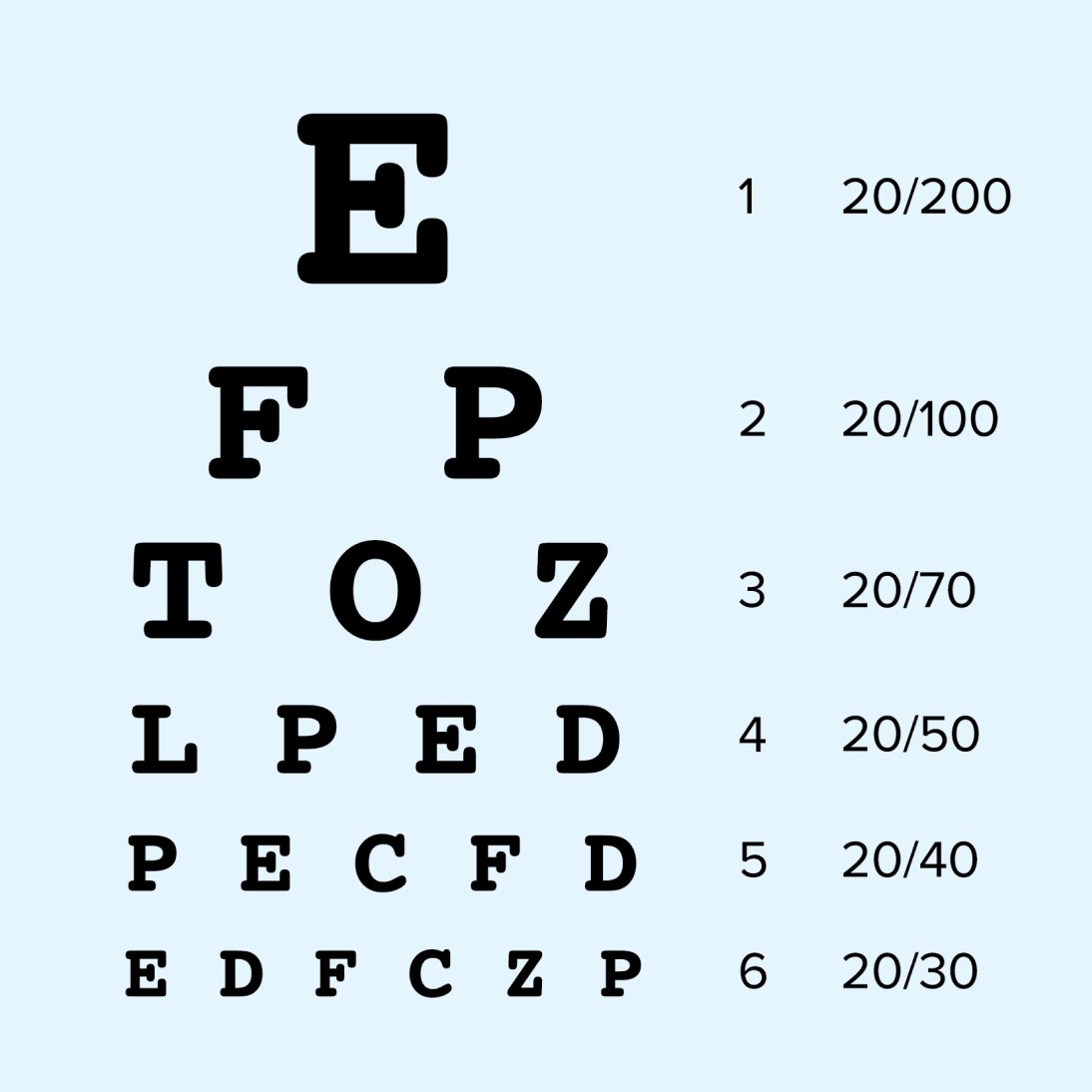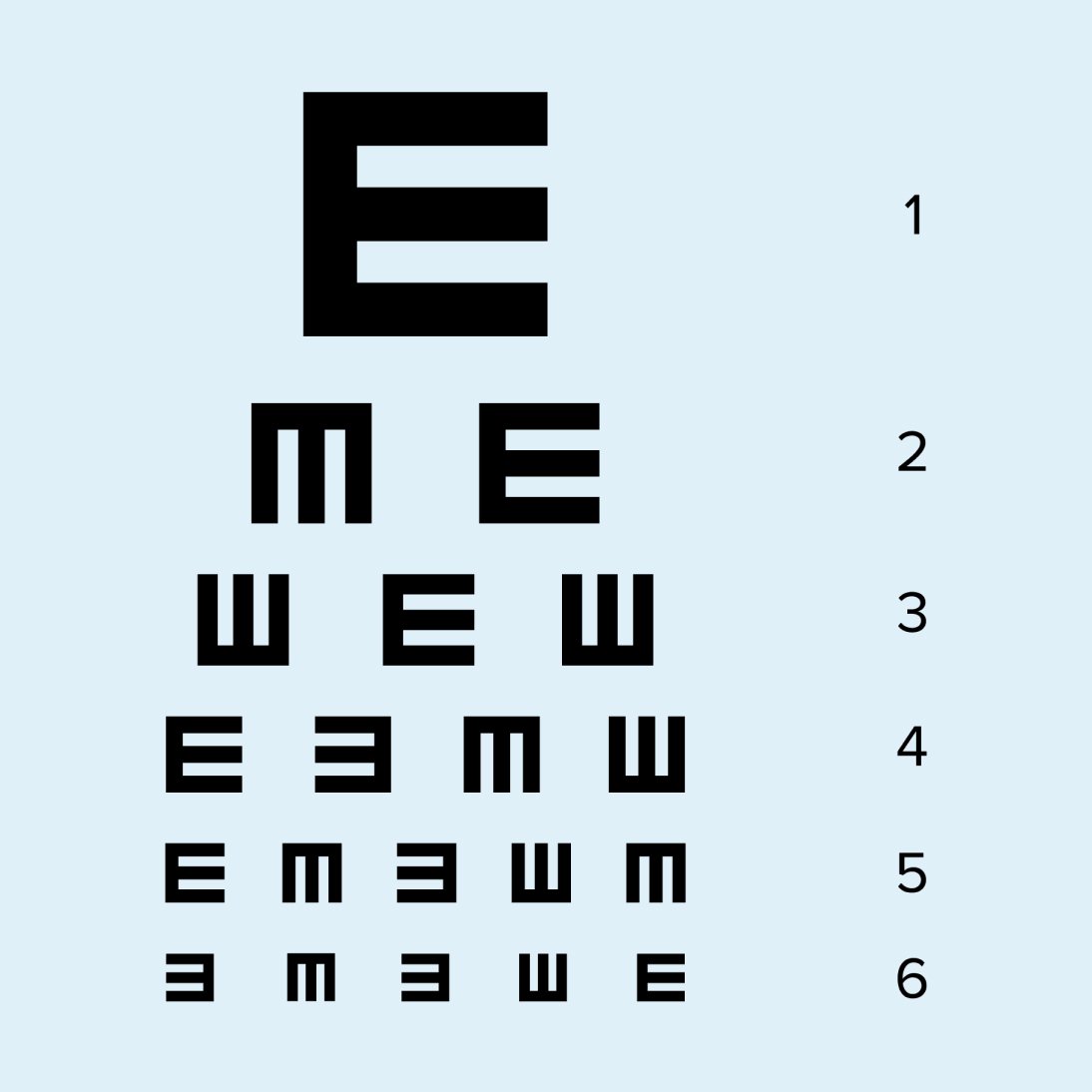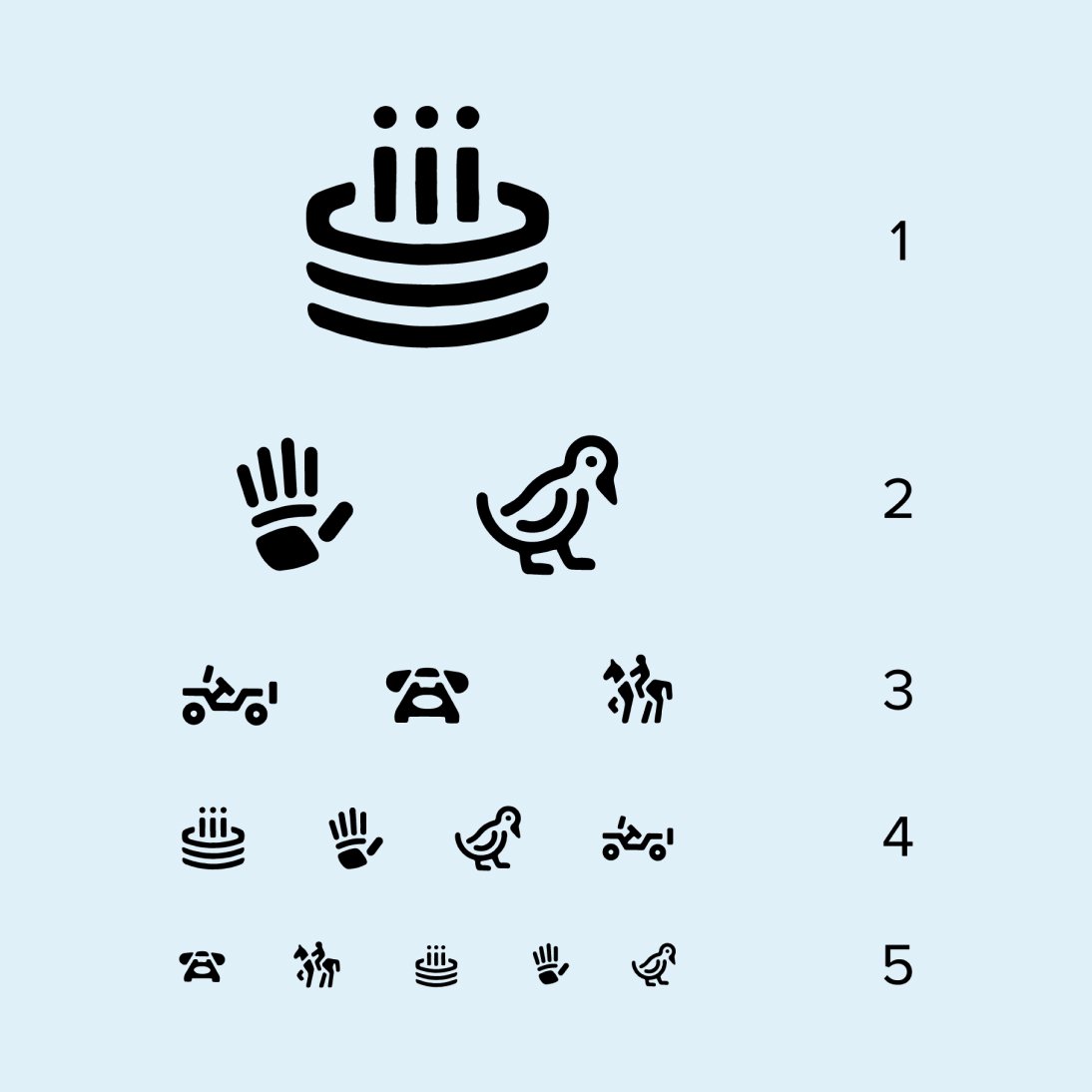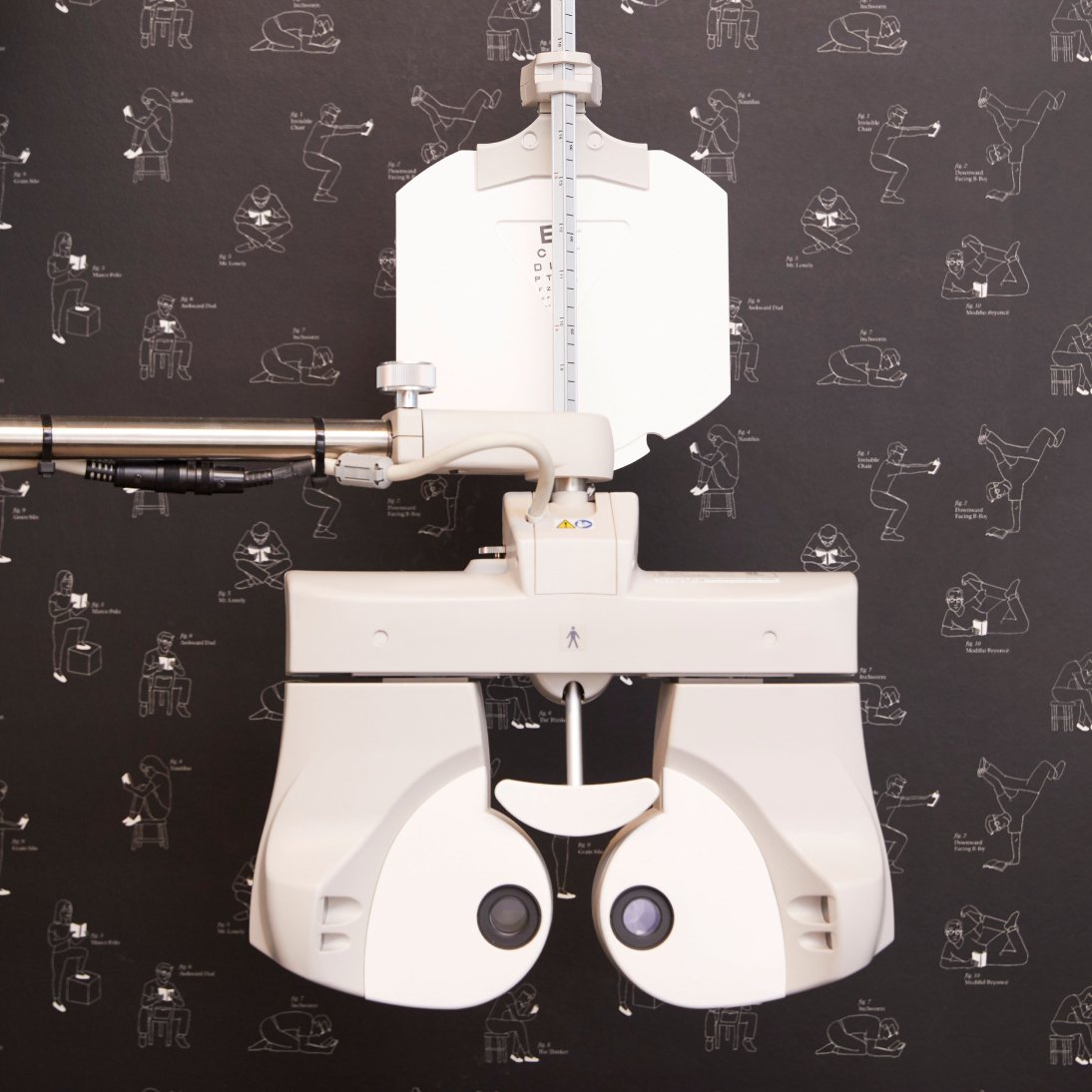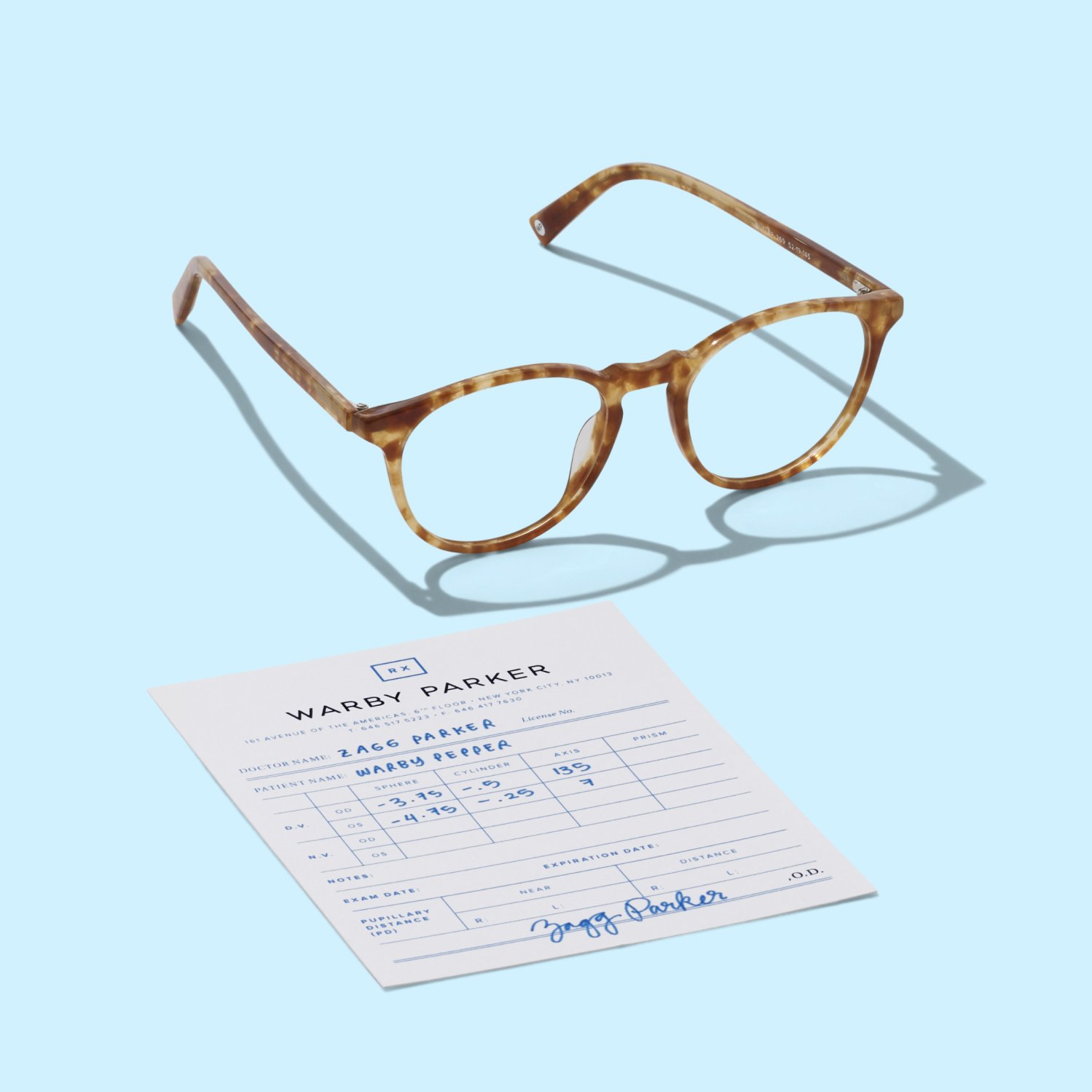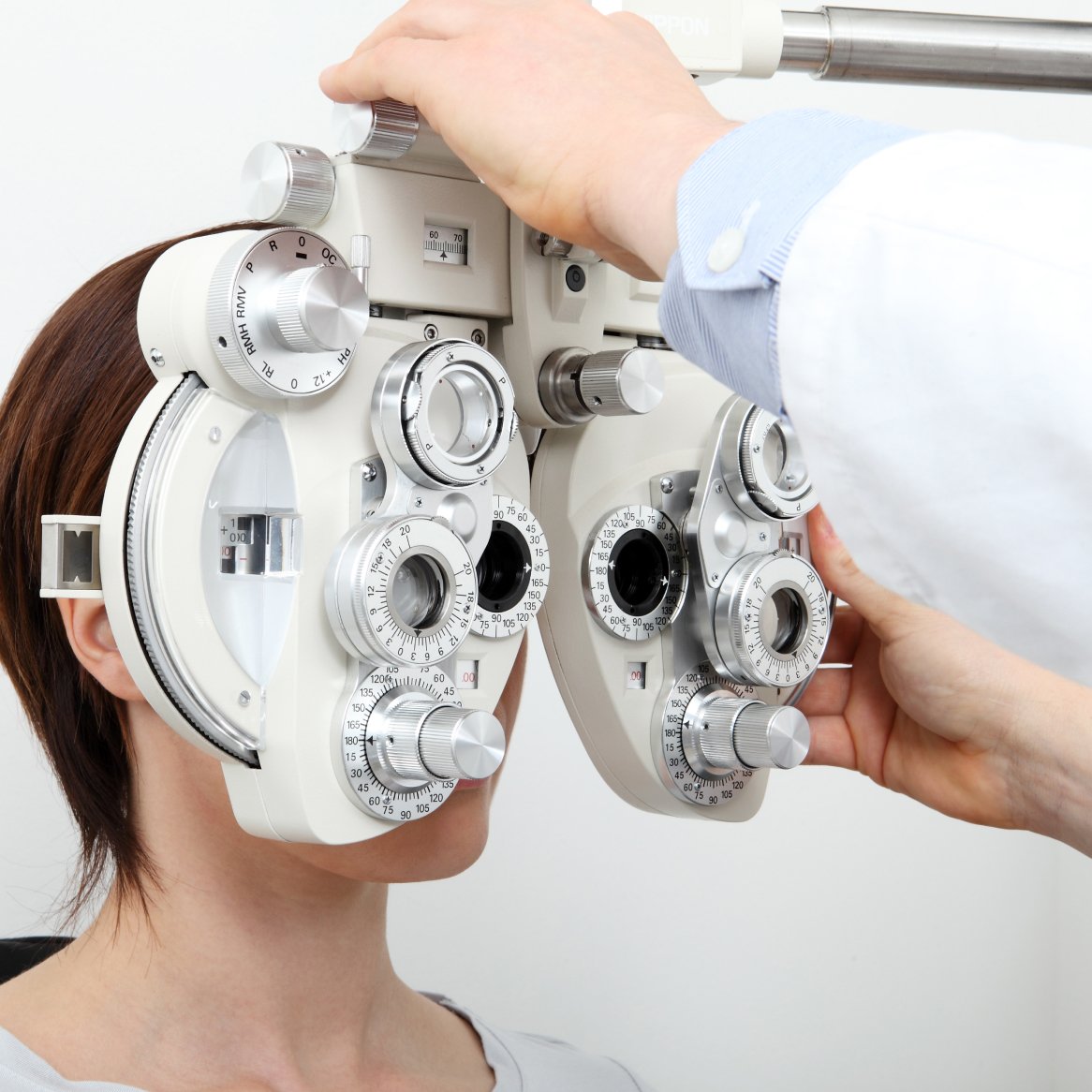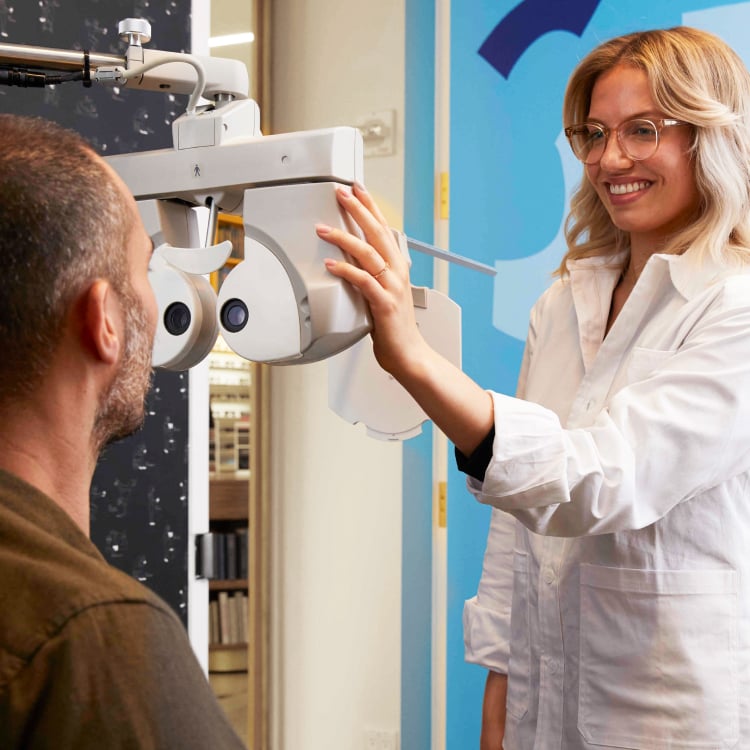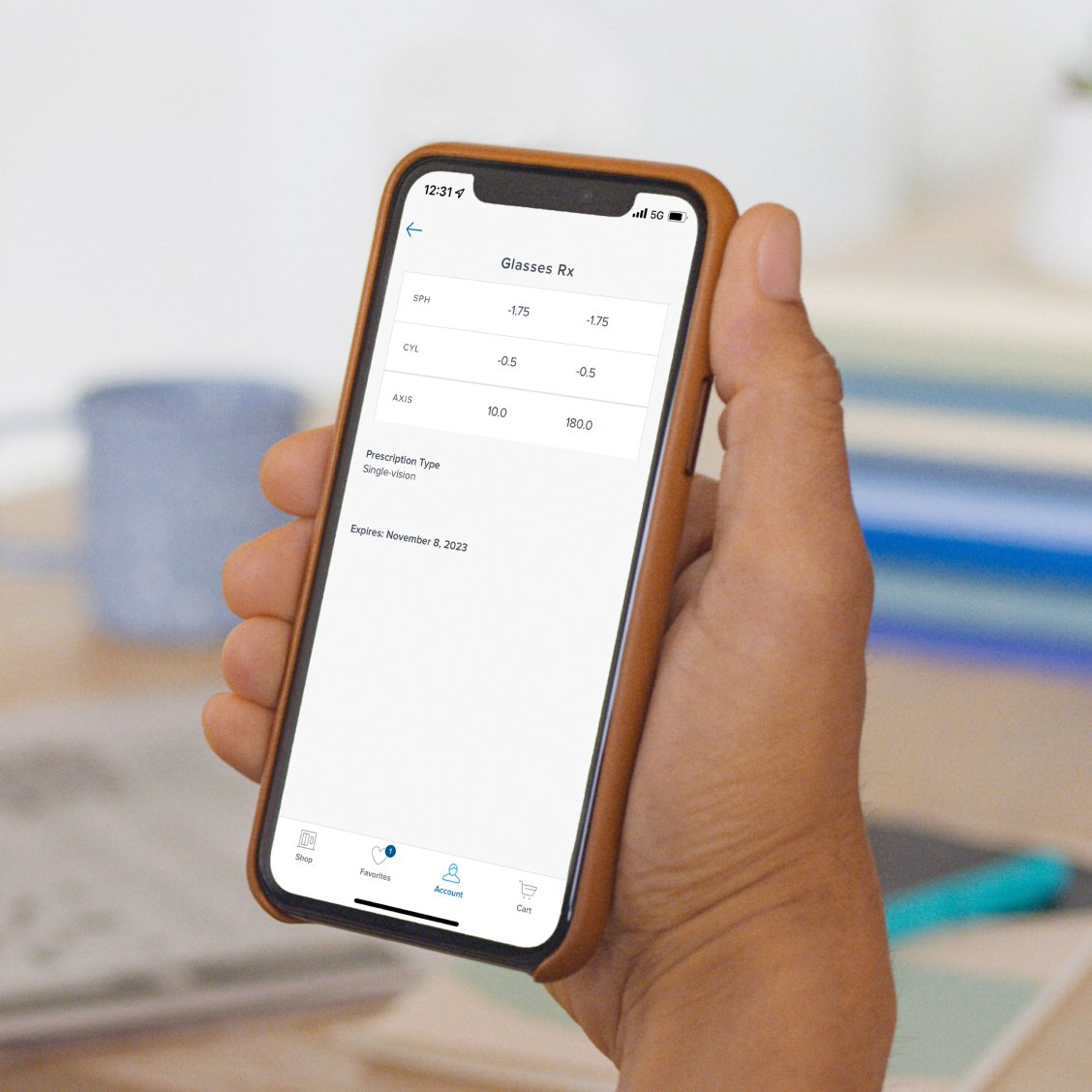Visual acuity is a measurement of how sharp your vision is when you look at objects at a certain distance. It’s represented in fractional scores that you’re probably familiar with, thanks to that one friend who loves to brag about their 20/20 vision.
But for those of us who don’t have 20/20 vision, we may not know our visual acuity at all. So let’s take a step back and talk about what visual acuity is, how it’s tested, and how it’s interpreted (no matter the numbers at play).
How Is Vision Measured?
Your eye doctor can measure the clarity of your vision by performing a visual acuity test. This test is done as part of a comprehensive eye exam. It’s the part of your exam that involves reading from what you might call an “eye test chart.”
Let’s first take a look at the charts used for testing visual acuity, and then we’ll explain how they’re used.
Types of Visual Acuity Charts
There are many different variations of visual acuity charts that may be used to test your vision. Here are the ones that are most commonly used.
Snellen Chart
A Snellen chart is the most commonly used chart for testing visual acuity. (That’s why you might sometimes hear a visual acuity test referred to as a Snellen test.) It’s most likely the chart you’ll encounter during your eye exam.
This chart features rows of capital letters (they call these “optotypes,” if you want to get fancy) decreasing in size from the top to the bottom of the chart. It’s named for its creator, Dutch ophthalmologist Herman Snellen.
Random E Chart
Our good friend Dr. Herman Snellen also created this version of the visual acuity chart—the random E (or tumbling E) chart.
This was developed as an alternative to the Snellen chart for individuals who might be unable to identify letters or communicate. For instance, this chart may be used for children or adults who can’t read. It can also be used for patients who are unable to speak. Rather than naming letters, a patient would only need to say or point to which direction the “fingers” of the “E” are facing.
(Dr. Snellen created this chart in the 1800s—talk about being ahead of the times for inclusivity in eye care! Thank you, Dr. Snellen.)
Object Recognition Chart
Several variations of an eye test chart can be used to assess children’s visual acuity. (The one pictured is an Allen figure test chart.) These simplified charts replace the capital letters of a Snellen chart with figures or shapes that children are typically familiar with.
What Is the Proper Procedure for Testing Visual Acuity?
A visual acuity chart (most commonly the Snellen chart) will be set up 20 feet away from you. Sometimes mirrors are used to create an illusion of distance if the room isn’t big enough to accommodate 20 feet.
Your eye doctor will have you read the rows of letters from the top down—without glasses or contacts—to determine the smallest row you can see clearly. That smallest row you can identify accurately determines your visual acuity score.
Typically, the eye doctor tests each eye individually by having you cover or close one eye at a time. After all, it’s possible for visual acuity to be different for each eye. Your doctor will use your visual acuity score (with other information) to help determine your prescription.
Understanding Your Visual Acuity Results
You may have heard the term “20/20 vision” before. But what those numbers actually mean is a bit of a mystery for many people. So let’s break it down.
What Do Visual Acuity Numbers Mean?
Your visual acuity score is a ratio that compares your vision to that of someone with “normal” vision.
The first number of your visual acuity score represents the distance between you and the eye test chart. This number is 20 for 20 feet. (In regions that use the metric system, the top number would be 6 for 6 meters.)
Remember how we mentioned finding the smallest row of letters you can read clearly? The second number of the visual acuity score is where that comes into play. The second number of your score is the distance at which someone with “normal” vision can read the smallest row you’re able to read.
The larger the second number, the less sharp a person’s vision is. Let’s look at a few scores as examples.
20/20 Vision
20/20 vision is considered “normal” visual acuity. Someone with a visual acuity of 20/20 can clearly read the same row on the Snellen chart that the average person can at a distance of 20 feet.
Many people mistakenly think that having 20/20 vision means your vision is perfect. But that’s actually not true. 20/20 vision is considered “normal” or average.
So why do we keep putting “normal” in quotation marks? If “normal” suggests something is common, then having less than 20/20 vision and needing corrective eyewear is pretty normal, too. Research shows that about half of the U.S. population has some kind of refractive error (vision problems that need correction, such as nearsightedness or farsightedness).
20/40 Vision
20/40 vision is a bit less sharp than 20/20. A visual acuity score of 20/40 means that a person can see clearly at 20 feet what an average person (with 20/20 vision) can see clearly at 40 feet away.
20/40 would be considered a mild issue. Some people with 20/40 vision might even choose not to wear corrective lenses. (But they would see more clearly if they did.)
20/100 Vision
20/100 vision, on the other hand, would be considered a moderate visual impairment. If your visual acuity is 20/100, it means that you need to be standing 20 feet away to see something clearly that average people can see clearly when standing 100 feet away.
How Scores on the Visual Acuity Scale Are Categorized
Your visual acuity score may be recorded as “uncorrected” or “best corrected.” An uncorrected visual acuity score is your score without wearing corrective lenses. The best corrected visual acuity (BCVA) is your score while wearing corrective glasses or contacts.
If you’re concerned about visual acuity because of driving or occupational requirements, it’s typically your BCVA that will matter. For instance, most states require a BCVA of 20/40 to obtain a driver’s license.
According to the World Health Organization, visual acuity scores are categorized as follows:
- Mild vision impairment – 20/40 to 20/60
- Moderate vision impairment – 20/60 to 20/200
- Severe vision impairment – 20/200 or lower
Visual Acuity Is Just One Piece of the Puzzle
More goes into your eye prescription than just your visual acuity. If you don’t have 20/20 vision, don’t panic. Most people can achieve clear vision with the help of glasses or contacts. (Plus, that means you have an excuse to shop for new eyewear 😉.)
If you have questions about your visual acuity and how it impacts your vision, make an appointment with your eye doctor.


